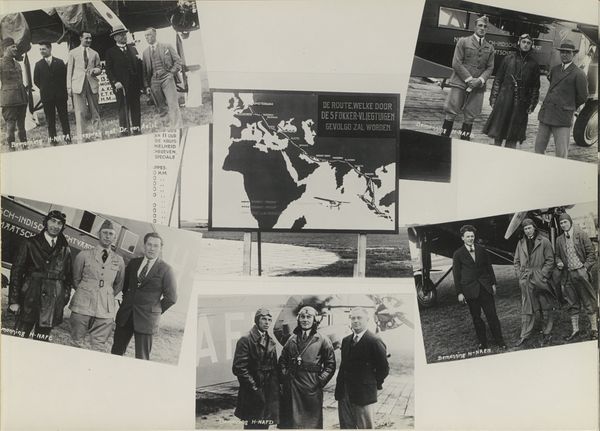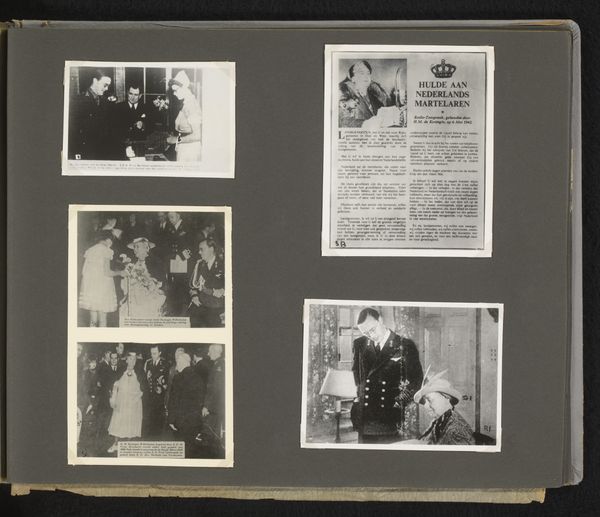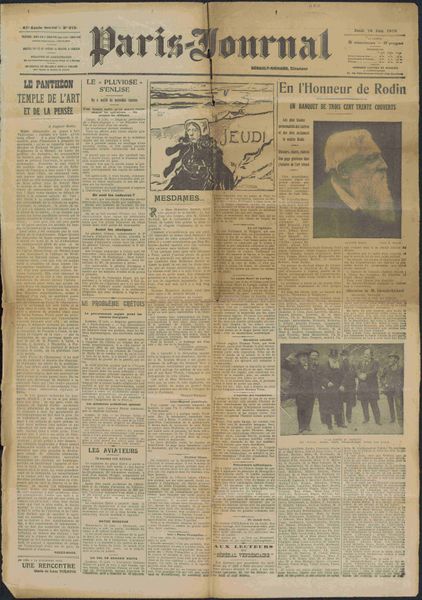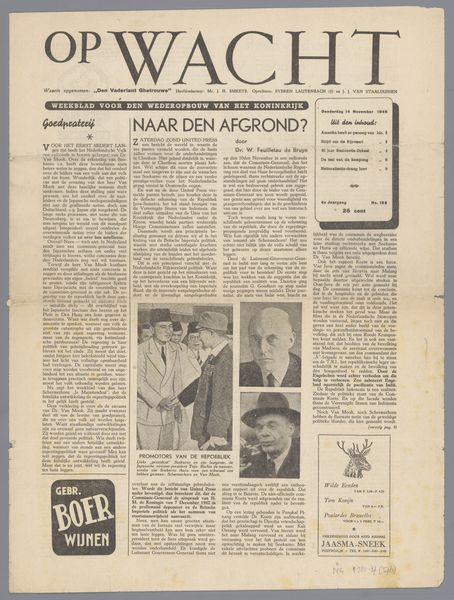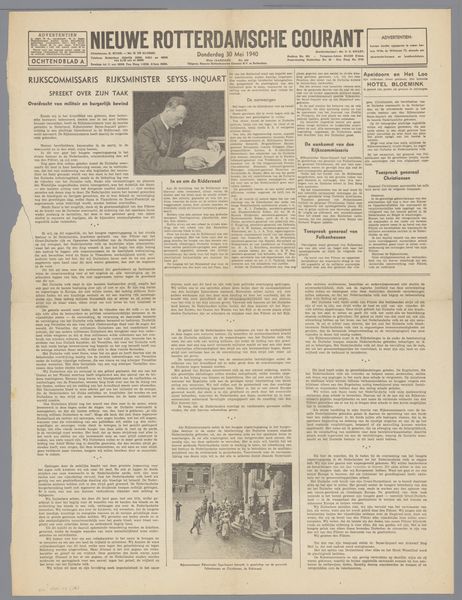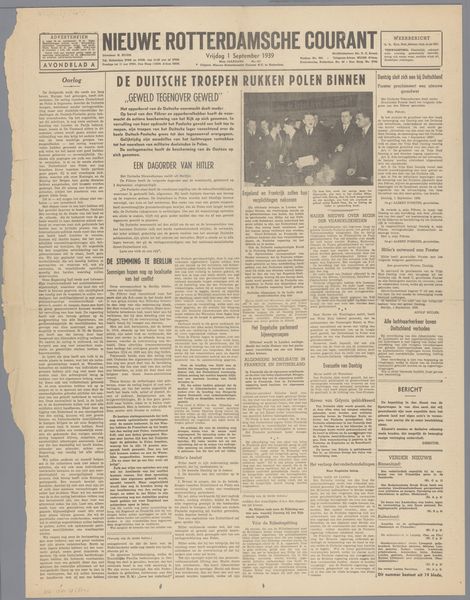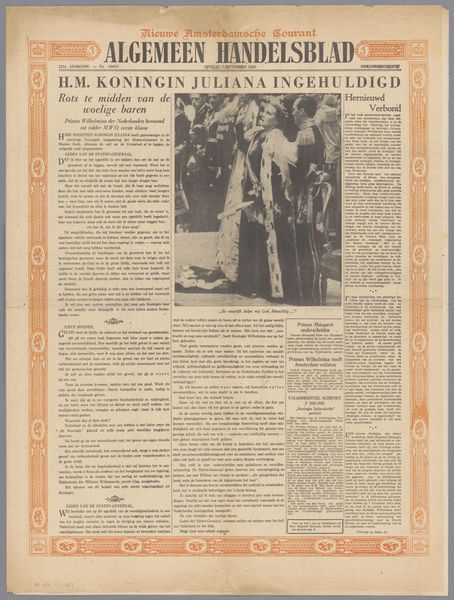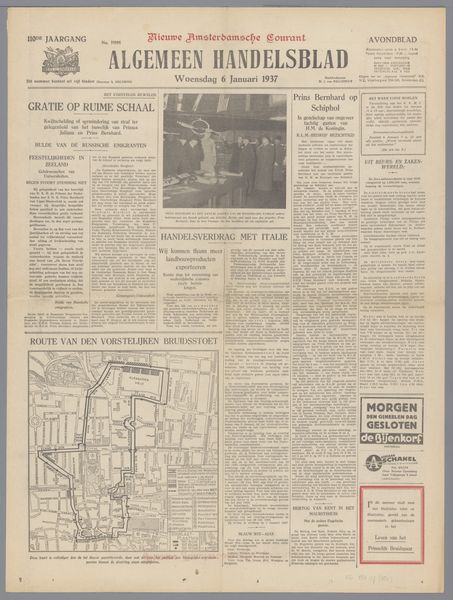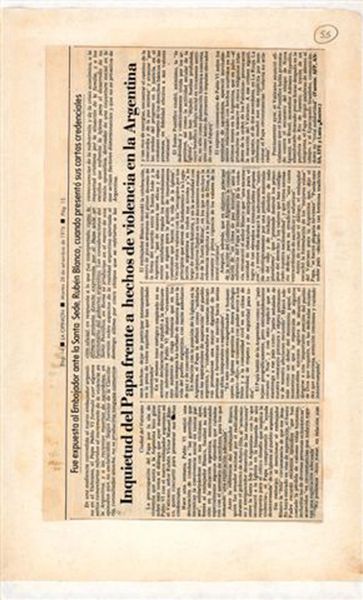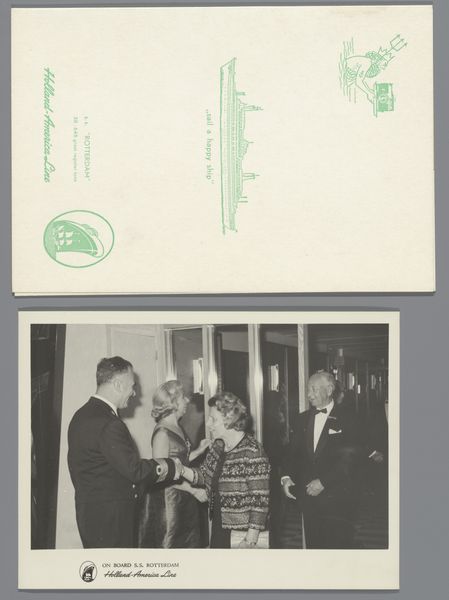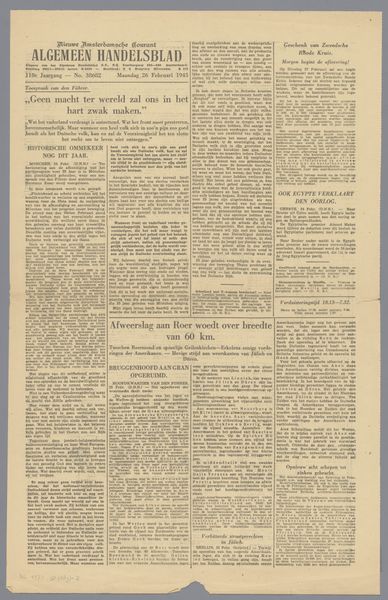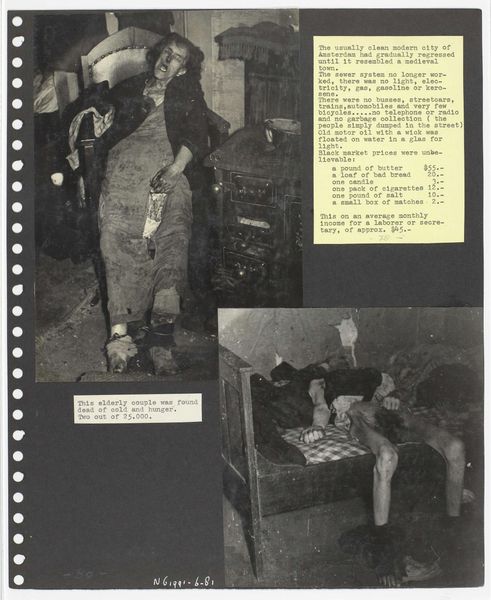
mixed-media, collage, print, photography
#
mixed-media
#
collage
# print
#
photography
#
pop-art
#
modernism
Dimensions: sheet: 38.8 x 30.4 cm (15 1/4 x 11 15/16 in.)
Copyright: National Gallery of Art: CC0 1.0
Curator: This is "Washington, DC" by Robert Frank, made in 1960. It's a mixed-media collage incorporating print, photography, and other elements. What strikes you immediately? Editor: The layering! It's a chaotic yet compelling arrangement of newspaper clippings and photographs. The tactile quality and the way these materials have been combined suggests an act of both preservation and critique. Curator: Indeed. Frank's choice of materials points to his interest in everyday media. Note how he disrupts traditional photographic framing through collage. What might this disruption achieve aesthetically or conceptually? Editor: It challenges the authority of any single image or narrative. By overlaying them, Frank forces us to reconsider the meaning we assign to each, and to question the context within which they were originally presented. Look at the newspaper text showing through, it almost suffocates the image. Curator: Precisely. Formally, the contrast between the blurred newspaper print and the sharper photographic images creates a tension, almost a visual anxiety. This relates to Frank’s overall exploration of societal issues. How might the production of such a work itself comment on contemporary society? Editor: It could be interpreted as a commentary on the information overload and the constructed nature of news. Assembled and pasted, Frank's piece mimics the frenetic process of information production and dissemination, while subtly subverting it. There's a distinct handmade quality. You see the process, not just a finished image. Curator: It definitely feels incredibly handmade. It seems Frank really pushed against any conventions that would dictate his composition. The high art versus low art dynamic is very much at play here. Editor: Absolutely. This artwork prompts us to reflect on the cultural narratives we consume, not passively, but critically—by revealing the artist's active labor and decisions in its creation. It becomes less about pure aesthetic contemplation and more about socio-political investigation. Curator: A powerful demonstration of how the intentional arrangement of readily available materials can reveal the unstable nature of historical truth. Editor: A revealing insight on process that shows the ways the materials are very much the message itself.
Comments
No comments
Be the first to comment and join the conversation on the ultimate creative platform.
